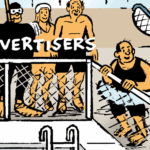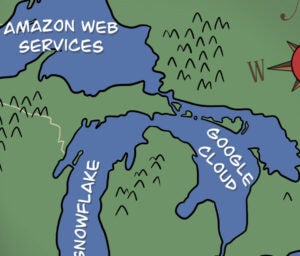 Mobile agency Fetch is in serious growth mode.
Mobile agency Fetch is in serious growth mode.
It’s been just shy of a year since Fetch became part of the Dentsu Aegis Network, which reportedly shelled out around $48 million in November 2014 to buy the London-based agency.
Although Fetch still maintains its global headquarters in London, CEO and co-founder James Connelly said that the UK, once a bastion of the agency’s business, represents “quite a small market for us now.”
These days, it’s all about global expansion – because the app economy knows no borders. In addition to London, Fetch has a presence in San Francisco, Hong Kong and, most recently, New York, which opened its office doors in March.
When Fetch first decided to crack the US market in 2013, San Francisco was its first port of call – not New York, as one might assume would be the case for an agency looking to make a name for itself stateside.
“San Francisco is the mecca of mobile marketing, which made it a really important place for us to be, both from a product perspective and to make sure we stay on top of the latest innovative advertising technology,” said Connelly, who has now temporarily relocated to New York to help kickstart Fetch’s East Coast presence.
Fetch, whose clients include Uber, Facebook, Apple Music, eBay, Warner Bros. and Hotels.com, saw revenues north of $120 million in 2014, roughly 70% of which came from media. The agency’s headcount clocks in at 120, a number Connelly said he expects to see increase significantly over the coming year.
AdExchanger caught up with Connelly to chat about his expansion plans, Fetch’s talent requirements and why smartwatches are just, well, lame.
 AdExchanger: What does Fetch get out of being a part of Dentsu Aegis, and what does Dentsu get out of Fetch?
AdExchanger: What does Fetch get out of being a part of Dentsu Aegis, and what does Dentsu get out of Fetch?
JAMES CONNELLY: They bring a huge global infrastructure that allows us to execute our long-term goals around growth. They have 30,000 employees worldwide, and they’re one of the fastest growing and most digital advertising and marketing groups globally. That’s a perfect breeding ground for our ambitions as a business.
And we’re an independent brand within their network. We look after our direct clients, but we also operate as a center of excellence to provide mobile expertise across the group and its clients. We’re collaborating on some client work, but we are not the mobile department for the Dentsu Aegis Network.
You’re working on growing in the US now. Can you expand on your other expansion plans?
In total, we’ve run advertising is just over 100 countries. A lot of what we do is automated and programmatic, so we’re able to run that through interfaces rather than in-market trading.
We’ve set up our business around hubs. Take our Asian hub, for example. From our base in Hong Kong, we identified the key markets in the region – Japan, China and South Korea – and then we made sure that we had natives from each of those countries in the hub office.
Can you share an example of Fetch’s client work?
We run on-device advertising globally for Uber, looking at specific characteristics to target the people who are most likely to become drivers and the people who are most likely to become riders. Uber is a marketplace of supply and demand, and in order for it to offer everyone good value, it needs to maintain a balance. We work with them to get that balance right in multiple markets.
That’s about performance. But how about the creative side of things?
The creative is super important and yet, so many people just think about it as a necessary evil. But the creative is what the consumer interacts with. Just because mobile is a smaller screen doesn’t make creative less important – I’d argue that the smaller screen makes it more important.
For example, we created unique mobile video content for our client Hotels.com. A huge number of people are watching video on mobile, but it’s not the same type of video they’re watching on other platforms. Most of the time it’s in portrait mode, it’s autoplay and it’s silent. You need content that’s relevant for that experience if you want to get the desired outcome.
Digital and TV formats have been shoehorned into mobile devices, and it’s being called “mobile advertising.” But that’s simply not good enough. It reminds me of the days when pop-ups were basically print ads on desktop.
Wearables – watches, especially: Lame? Or an opportunity?
Lame. They’re over-engineered, and they’re not really solving a consumer challenge. It’s more of a corporate development thing for the likes of Apple and Samsung. I bought the Apple Watch and I’ve worn it about three times. I prefer my stupid watch. I’ve got my phone in my pocket and it does everything I need it to do.
The only interesting thing is related to health and fitness – but why buy a $500 health and fitness device? I can’t see smartwatches being a sustainable product globally.
What’s one thing that the industry is obsessed with that they shouldn’t be – and one thing the industry should be paying attention to but isn’t?
Stop looking at ad blocking. Everyone is obsessed with it, but it affects about 2% of mobile advertising and is not the armageddon of mobile advertising. It’s just a symptom of poor mobile ads.
Start looking at apps on TV. That’s going to game-change TV like nothing else before.














